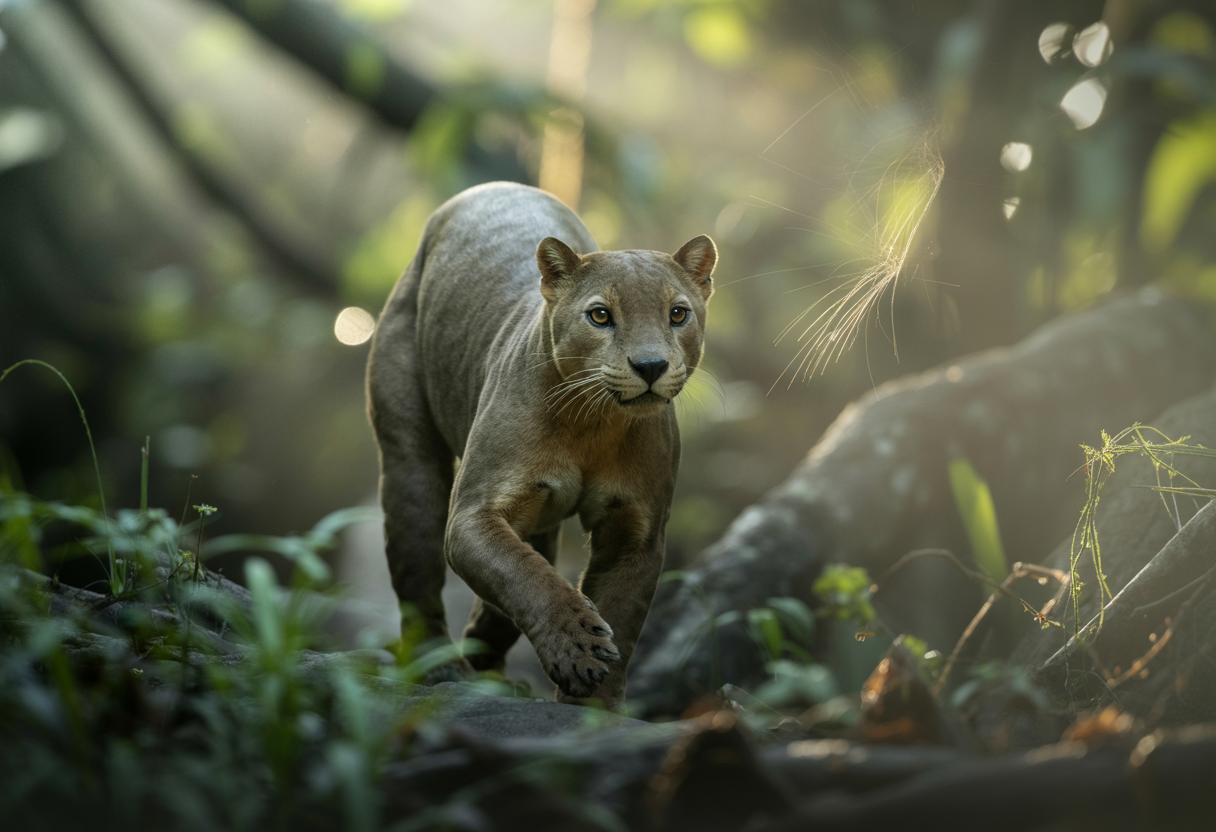The jaguarundi might be one of the most fascinating yet misunderstood small wildcats you’ve never heard of. Often described with terms like “weird” or “strange-looking,” this remarkable feline deserves a closer look beyond superficial judgments. Native to the Americas and ranging from southern Texas to northern Argentina, this sleek wildcat has adapted to survive in diverse habitats while remaining largely invisible to human eyes.
What exactly is a jaguarundi?
The jaguarundi (Herpailurus yagouaroundi) is a small wild felid with a distinctively elongated body, short legs, and an unusually long tail. Unlike its spotted cousins, this wildcat sports a uniform coat in either reddish-brown or slate gray coloration. Despite its name, it’s actually more closely related to mountain lions than to jaguars.
“Jaguarundis are often called ‘weasel cats’ or ‘otter cats’ because of their unique body shape,” explains Dr. Elena Martinez, wildlife biologist specializing in Neotropical felids. “They’re built for stealth and speed, perfect for hunting in dense undergrowth.”
Is the jaguarundi really “horrible”?
Far from being “horrible,” the jaguarundi is simply unique. Its unusual appearance – lacking the spots typical of many wildcats – combined with its secretive nature has led to misunderstandings. These small predators are remarkably adaptable and play important ecological roles in their habitats.
“What people might perceive as ‘strange’ about jaguarundis is actually evolutionary brilliance,” notes Carlos Fernandez, conservation specialist. “Their body shape and uniform coloration are perfectly adapted for their hunting style and preferred habitats.”
Surprising behaviors of the mystery cat
Unlike most wildcats that hunt primarily at night, jaguarundis are diurnal hunters – active during daylight hours. This unusual schedule helps them avoid competition with nocturnal predators like ocelots. They’re also impressive swimmers and climbers, though they prefer hunting on the ground.
During a recent field study in Belize, researchers documented a jaguarundi swimming across a river with ease, then immediately continuing its patrol – showcasing the remarkable versatility that helps these cats thrive across diverse ecosystems.
Why jaguarundis deserve our attention
- They’re excellent indicators of ecosystem health
- Their presence helps control rodent populations
- They face increasing threats from habitat loss
- They’re among the least studied wildcats in the Americas
Conservation challenges in a changing world
Like many species, habitat fragmentation presents the greatest threat to jaguarundi populations. These cats need connected landscapes to maintain genetic diversity and find sufficient prey. They’re like wildlife highways that suddenly end in concrete barriers – their natural movements increasingly blocked by human development.
Recent research shows that populations are declining at alarming rates in parts of their range, though comprehensive studies remain scarce.
The untold intelligence of these small wildcats
Jaguarundis possess remarkable problem-solving abilities comparable to the cognitive functions of other adaptable predators. Their hunting strategies involve complex decision-making and environmental awareness that would impress even seasoned wildlife observers.
- They use varied vocalizations – up to 13 distinct calls
- They adapt hunting strategies based on prey and habitat
- They demonstrate remarkable spatial memory
Fascinating encounters in unexpected places
Wildlife photographer Maria Santos recalls: “I spent three years trying to photograph jaguarundis in Costa Rica. When I finally spotted one, it was casually walking along a trail that tourists use daily. They’re like ghosts – present but unseen unless they choose to reveal themselves.”
Could technology help us understand these elusive cats?
Modern wildlife monitoring tools like camera traps and GPS collars are finally shedding light on jaguarundi behavior, similar to how wearable technology has transformed our understanding of human health. These innovations may help answer questions that have puzzled researchers for decades.
What can we learn from these remarkable survivors?
In many ways, jaguarundis represent nature’s resilience – adapting to changing conditions much like iconic franchises evolve through time. Far from “horrible,” these remarkable cats embody evolutionary success through specialization and adaptability. By learning to appreciate their unique qualities, we might just discover what makes them not only fascinating but essential components of healthy ecosystems across the Americas.
